Melbourne Tram Museum
- Follow Melbourne Tram Museum on Twitter
- Follow Melbourne Tram Museum on Facebook
- Follow Melbourne Tram Museum on Instagram
- Follow Melbourne Tram Museum on Pinterest
- Follow Melbourne Tram Museum on Tumblr
- Subscribe to Melbourne Tram Museum's RSS feed
- Email Melbourne Tram Museum
Vimy House: a tramway hospital and its World War I link
The history of Vimy House Private Hospital goes back for more than a century, from its original premises at 25 Queens Road, Melbourne, to its current location in Kew.
Most people nowadays would assume that there was some link between the hospital and the World War I Battle of Vimy Ridge in April 1917. What may be less well known is that Vimy House also had a close connection with the Melbourne tramways for more than five decades, from 1949 to 2002.
Beginnings
After the economic crash of the 1890s, many of Melbourne’s stately mansions were demolished, subdivided or converted to other uses – the last of which was the fate of the property at 25 Queens Road.
Constructed in 1883, Bendigonia was the private residence of John Edward Gard (1840-1920), a prominent member of the Bendigo mining community. Described by the National Trust as a very unusual example of bargeboarded Rural Gothic style, it is attributed to the architect John Beswicke [1]. The building was extended in 1896 when a third bay was installed on the Queens Road elevation. In 1910 the house had three reception rooms, a smoking room, eight bedrooms, multiple bathrooms and a kitchen. The outbuildings included stables, coach house, harness room and a large fernery.
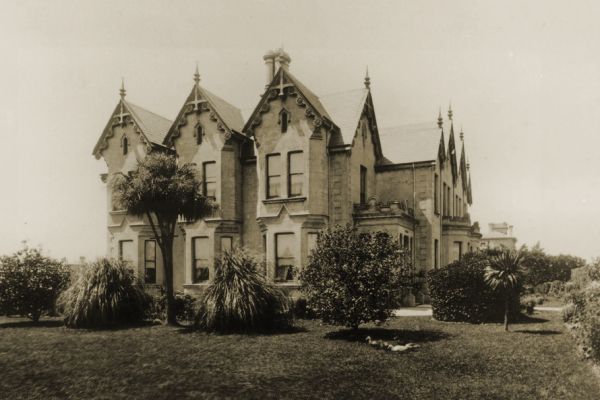
Bendigonia, Queens Road, South Melbourne, home of John Edward Gard, c1896.- Photograph courtesy State Library Victoria, Imperial Institute series of photographs of Victoria.
The property was first registered as a private hospital in 1914, with the proprietors being two nurses – Ida Maud Gemmell (a 1902 graduate from the Women's Hospital) and Jemima Munro Campbell. The hospital was initially known as the Bendigonian, but by 1915 it was called St Luke’s.
The World War I connection
In 1920 St Luke’s Private Hospital was acquired by another two nurses, Leah Rosenthal and Belle Jobson, and renamed Vimy House. Rosenthal and Jobson had newly returned from Europe where they had been serving in France during World War I with the Queen Alexandra’s Imperial Military Nursing Service (QAIMNS) Reserve.
So why would two Australian nurses commemorate the April 1917 Battle of Vimy Ridge? No Australian troops fought in this offensive. For Canadians, however, this battle is viewed as a defining moment in the history of their nation – holding a similar significance as Gallipoli does for Australians. Indeed, all Canadian losses in the First World War are commemorated by the Canadian National Vimy Memorial, located at the battle site.
To find an answer, we need to know more about Jobson and Rosenthal.
Isabella (Belle) Kate Jobson was born in Clunes in 1878. She matriculated from South Melbourne College in 1893, then went on to nursing training at the Alfred Hospital, where she graduated in 1902.
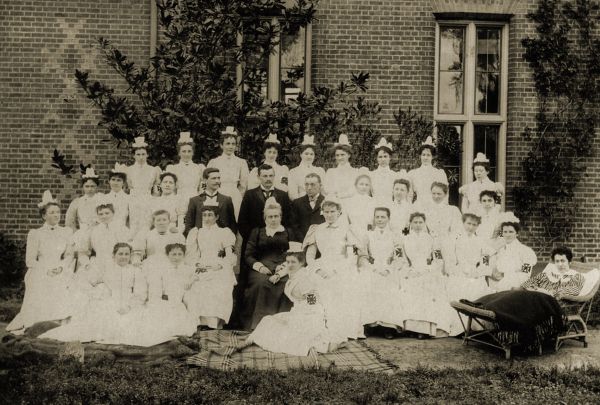
Alfred Hospital medical staff and nurses, 1899. Belle Jobson is standing on the left end of the second row from the back.- Photograph courtesy Alfred Hospital Nurses League.
Born in Melbourne in 1879, Leah Rosenthal also trained at the Alfred Hospital, graduating in 1904 after three years of training. She was a ‘B’ class pupil – these students were paid a pittance, plus were expected to do heavy work and put in long hours. In contrast, ‘A’ class pupils paid for their training – they were not expected to make nursing a career and were excused from heavy work and long hours.
After her training at the Alfred, Rosenthal became a certified midwife.
From late 1910 until they enlisted, Rosenthal and Jobson ran the Windarra Private Hospital, at 274 Williams Road, Toorak. This had been established by another Alfred-trained nurse, Florence MacDowell (graduated 1903) who had moved abroad.
After the outbreak of war, Rosenthal and Jobson volunteered with, and were accepted by, Queen Alexandra’s Imperial Military Nursing Service, which was a unit of the British Army. They departed Melbourne together on the Karoola on 18 December 1915 [2].
The QAs, as they were known, were considered the elite of the British Army’s military nurses, and this was reflected in the selection process. Candidates had to be aged between 25 and 35 years, single, well-educated and of “good social standing”. They were required to have undertaken three years of hospital training. Good references – particularly from the applicant’s Matron – were essential. Only the best were accepted, and QAs were deemed to have officer status, always being addressed as “Sister”.
Nurses in the QAIMNS Reserve – in contrast to the regulars who had permanent positions within the QAIMNS – were on annual contracts which were renewed each year, subject to satisfactory performance. At the end of the war the nurses in the Reserve were expected to work out the remainder of their contract before returning to civilian life. The Reserve also accepted married QAs.
According to their service records, during 1916 the two nurses were posted – not always together – to a series of British base hospitals in Northern France, before both were assigned to No 33 Casualty Clearing Station (CCS) at Béthune in December 1916.
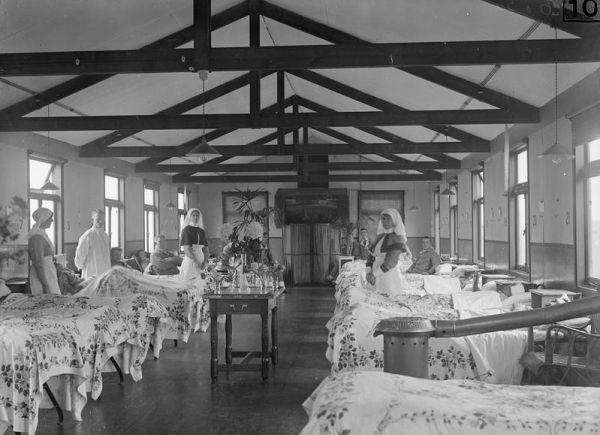
British No 13 Stationary Hospital, E.1 Ward for injuries to the eyes, Boulogne, 6 October 1916. This hospital was a main centre for eye and maxillofacial injuries. Jobson and Rosenthal were both posted here when they arrived in France in April 1916.- Photograph © IWM (Q29156).
The aim of a CCS was to facilitate movement of the wounded from the front line to hospitals – CCSs were not intended for long-term stays, with thousands of sick and wounded passing through each week. With between 200 and 1000 beds, they were staffed by seven to twenty experienced nurses – these nurses initially had a probationary period at a base hospital to determine whether they would be suitable for working closer to the front line. Most CCS were established in existing buildings, such as schools (as was 33 CCS at Béthune, situated in the Collège Saint Vaast), seminaries or convents.
However a CCS or hospital was not always safe from enemy fire. Rosenthal noted that one of her postings was often bombarded (this may have been referring to 33 CCS at Béthune which was under attack on several occasions during her time there). She sent home souvenirs of used shot and shell, including a heavy piece that hit the hospital and wrecked the local church, as well as a cap of a bomb that landed within three metres of her while she was in the hospital compound. She also carried a gas mask as protection against poison gas attack.

The Tiled Ward at No 22 Casualty Clearing Station, Cambrai, 1919. Jobson had a brief posting at this CCS in late 1918 when it was located in Pernes, just before it moved to Cambrai.- Photograph © IWM (Q8090).
Rosenthal and Jobson were amongst the first nurses trained in the use of anaesthetics, the course requiring two months in a base hospital followed by one month at a CCS.
The two nurses were together at 33 CCS at Béthune from December 1916 to December 1917, except for one week when Jobson was posted to 21 CCS at Ytres. Over the next three months they were stationed at various British General Hospitals, before being sent – not always together – to a series of different CCSs around Arras in Northern France from March 1918 to November 1918. Both Jobson and Rosenthal had spells at Canadian, as well as British, CCSs during this time.
At their various postings Rosenthal and Jobson would have treated the sick and wounded from some of the major actions of the Western Front, including the Battle of Arras (April to May 1917). One of the main British objectives of that battle was to capture Vimy Ridge, high ground from where the Germans could observe the British lines of communication across the relatively flat Arras battlefield. On 9 April 1917 all four Canadian infantry divisions – for the first time fighting as a unified force – successfully took the ridge, but at a great cost. On that one day 3598 Canadians were killed and 7004 wounded.
Given our two nurses’ proximity to the area, it is hardly surprising that they would choose to commemorate such a renowned victory with the name of their hospital back in Melbourne. But could there have been an additional factor involved?
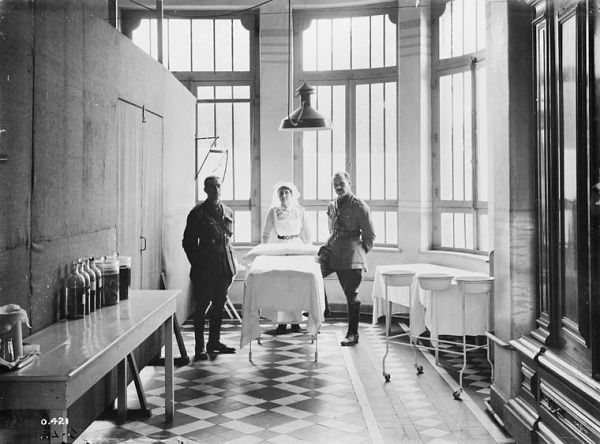
Operating room, No 1 Canadian Casualty Clearing Station, Bailleul, July 1916. This CCS was located in an asylum (Maison de Santé). Both Jobson and Rosenthal were posted to No 4 Canadian CCS from April 1918: Jobson for eight weeks, Rosenthal for seven weeks.- Photograph courtesy Canada Department of National Defence/Library and Archives Canada/PA-000337.
In Jobson’s service record there is a note dated October 1916 referring to an application (not on file) for marriage and retention in the QAIMNS, which was recommended. Her service record also notes that the application was finally approved in October 1918, with the additional comment “ask where her future husband is serving”, suggesting that he was a member of the military forces. Unfortunately her service record was subject to the “weeding” exercise carried out in the 1930s in which material was removed and destroyed to save storage space; any details as to her prospective husband’s identity have been lost. Jobson never married. While we have found no evidence, given the Western Front’s high casualty rate there is a strong possibility that he may not have survived the war. And that perhaps the name of Vimy House may also be in his memory.
In April 1918, Nos 1 and 4 Canadian CCSs had been driven back by the German advance to the small town of Pernes and several QAs – including Jobson and Rosenthal – were temporarily posted to No 4 Canadian CCS to help with the high volume of casualties. Unlike No 33 CCS at Béthune, the facilities at Pernes were housed in Nissen huts and tents. Over the period 10-30 April there were 4060 patients admitted, 3525 evacuated and 865 operations. Jobson stayed there for eight weeks; Rosenthal for seven.
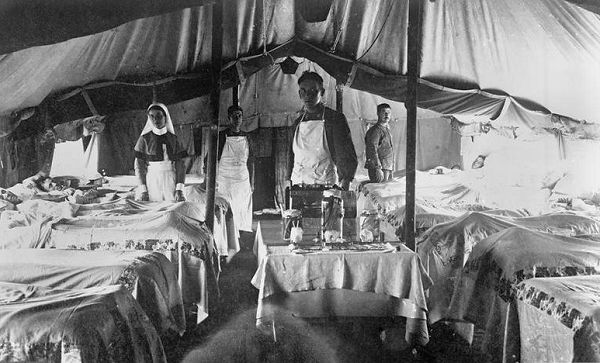
One of the “serious” wards at No 2 Casualty Clearing Station, Bailleul.- Photograph © IWM (Q436).
Rosenthal and Jobson described one of the saddest sights in their war experiences being that of refugees struggling along the roads to safety with their household treasures. These refugees were fleeing the German occupation and the war zones in Belgium and Northern France.
In a letter written six days before the armistice in November 1918, Rosenthal portrayed the grim conditions in a small French village after four years of war.
Rosenthal and Jobson returned to England in January 1919. The next month they attended Buckingham Palace, where they were both conferred with the Royal Red Cross (second class) by King George V. The Royal Red Cross (RRC) is a military decoration awarded in Commonwealth countries for exceptional services in military nursing. The Jewish Herald believed that Rosenthal was the first Australian Jewish nurse to be awarded the RRC.
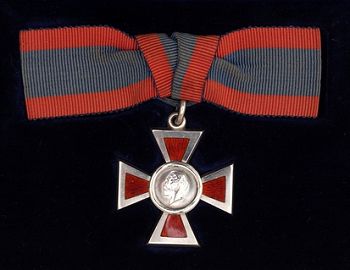 Royal Red Cross (second class) medal. This particular medal was awarded
to Sister Emma Argyle Cuthbert of the Australian Army Nursing Service
in 1919.
Royal Red Cross (second class) medal. This particular medal was awarded
to Sister Emma Argyle Cuthbert of the Australian Army Nursing Service
in 1919.- Photograph courtesy Australian War Memorial.
Rather than work out the remainder of their contracts, the two nurses resigned their positions in the QAIMNS, citing an urgent need to attend to their joint business interests in Australia. So after more than three years of war service, Rosenthal and Jobson embarked for Melbourne in April 1919. The following year they commenced their new venture at Vimy House.
From the 1920s to 1940s
Vimy House was one of many private hospitals throughout Melbourne, providing services to fee-paying patients. Private hospitals generally catered for the middle classes – as evidenced by the many entries in newspapers’ society pages announcing where well-to-do citizens were receiving medical treatment.
After running Vimy House in partnership with Jobson for ten years, Rosenthal died on 4 October 1930. She was buried at Brighton Cemetery.
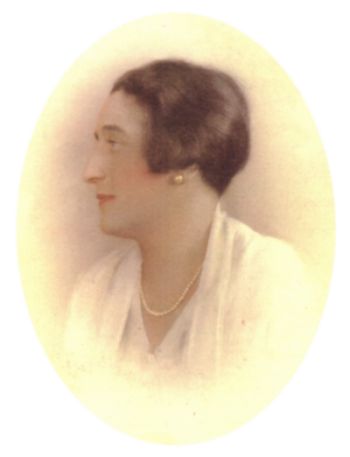 Leah Rosenthal ARRC, 1879-1930.
Leah Rosenthal ARRC, 1879-1930.- Image courtesy Alfred Hospital Nurses League.
Jobson was obviously devastated by the loss of her long-time friend and colleague. She founded the Leah Rosenthal prize – an annual prize awarded to the best theatre nurse at the Alfred. She also donated a portrait of Rosenthal to the Alfred Hospital Nurses Club.
Jobson continued as Matron of Vimy House, until her own death at Vimy House on 6 July 1943 after a long illness. She was buried at the Melbourne General Cemetery, Carlton.
The Leah Rosenthal memorial prize was awarded from 1931 to 1942, but lapsed after Jobson’s death.
Delivering medical services for tramway employees
At the beginning of the twentieth century, health care in Victoria was based on a fee-for-service model, with the poor, who could not afford care, being treated by public or charitable hospitals. It is estimated that in 1913 roughly half of all Victorians were beneficiaries of friendly societies, with medical services to members and their dependants being supplied by providers under contract to the societies.
Over time, patronage of public hospitals became more widespread. Hospital facilities improved and separate wards were introduced for private patients. Friendly societies subsidised beds – the Tramway Employees’ Mutual Benefit Society endowed beds at several Melbourne public hospitals – or even entire buildings, most notably the Druids-funded wings at the Women’s Hospital (now known as the Royal Women’s Hospital) in Carlton (the building was opened in 1912 and demolished in 1971) and at St Vincent’s Hospital in Fitzroy (opened in 1913, the building was demolished in 2015). Such arrangements typically enabled the contributing friendly society to utilise the hospital’s facilities for its members.
In 1949, Vimy House was purchased by the Tramway Employees’ Mutual Benefit Society (TBS) for the use of its members. The price was 23,500 pounds, of which 13,500 pounds was contributed by the Melbourne & Metropolitan Tramway Board (M&MTB). One condition of the sale was that the name of Vimy House was to be retained in perpetuity.
The TBS was a non-profit workplace-based friendly society, established in 1888 to provide various benefits – including medical care, sick pay and funeral allowances – to its members and their dependants. At the time of the purchase of Vimy House TBS had been operating a medical clinic at Capitol House in Swanston Street, but the scope of services that could be offered by that clinic was limited.
 Operating theatre at Vimy House, 1965.
Operating theatre at Vimy House, 1965.- Photograph from MMTB News, May-June 1965, Melbourne Tram Museum collection.
The TBS was funded by members’ contributions and also received an annual subsidy from the M&MTB. In 1950, this subsidy was 14,000 pounds (equivalent to just under $700,000 in 2016 dollars), and members paid one shilling per week (around $2.50 in 2016 dollars) for access to hospital treatment, both medical and surgical.
As far as we are aware, Vimy House may have been the only instance in Australia of a hospital that was owned and operated by an employee organisation.
The facilities at Vimy House were expanded in 1961 when Bathurst, the adjoining property at 24 Queens Road, was purchased for 70,000 pounds. Bathurst (now demolished) was originally a large ten-room Victorian villa, designed by Edward J Kerr [3], and built in 1897 for Richard Tope, an estate agent based in South Melbourne. The original single-storey clinker brick dwelling had wide verandas, extensive cast-iron lacework and a slate roof.
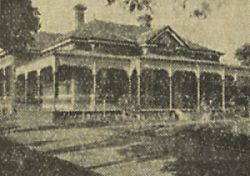 The original Bathurst at 24 Queens Road, South Melbourne.
The original Bathurst at 24 Queens Road, South Melbourne.- Photograph from The Argus, 7 June 1934, courtesy State Library Victoria.
In the mid-1930s Bathurst had been converted to a two-storey block of flats, enabling the property owner at that time to achieve a higher rental return. The conversion, designed by the noted modernist architect Joseph Plottel [4], included removal of the cast iron, enlargement of the building footprint, upwards extension of the walls which were also cement rendered in a more fashionable modernist style, and the slates replaced by tiles.
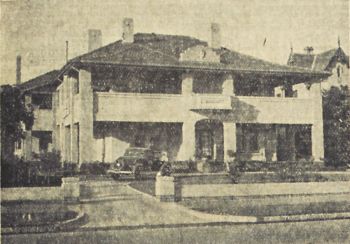 The newly remodelled Bathurst in 1934, at 24 Queens Road, South Melbourne.
Note the roofline of Vimy House on the right of the photograph.
The newly remodelled Bathurst in 1934, at 24 Queens Road, South Melbourne.
Note the roofline of Vimy House on the right of the photograph.- Photograph from The Argus, 7 June 1934, courtesy State Library Victoria.
This new acquisition for Vimy House subsequently housed an ear, nose and throat clinic, physiotherapy department, dental clinic and administration offices, as well as accommodation for the hospital matron and several live-in nursing staff.
TBS members received free hospital care and physiotherapy at Vimy House. Some dental treatments – including fillings, extractions and x-rays – were free, with other procedures provided at reduced rates.
By the mid-1960s the hospital had 36 beds and what was described as a “fully equipped” operating theatre. It catered to private patients as well as tramway patients, although priority was given to the latter.
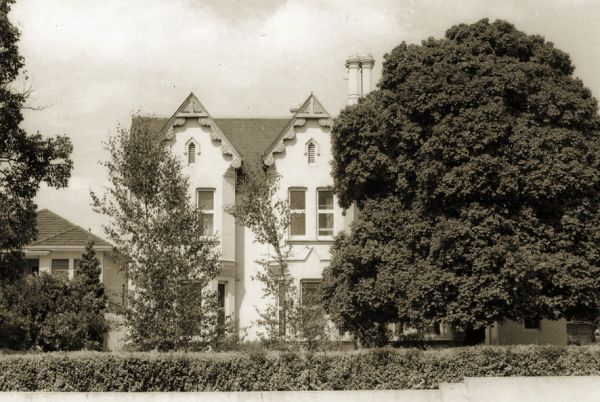
Vimy House Private Hospital, Queens Road, South Melbourne, 1963.- Photograph courtesy State Library Victoria, John T. Collins collection, La Trobe Picture Collection.
Move to Kew
The TBS sold its two properties at 24 and 25 Queens Road in 1970. The facilities required considerable improvements in order to meet modern standards – TBS decided that a better option would be to put the proceeds of the sale ($750,000) towards the construction of a new hospital.
To that end, the Kew site at 5 Studley Avenue was purchased. This was originally the family home of Walter Reginald Hume (1873-1943), an inventor and entrepreneur, and the founder of the Hume Pipe Company (now known as Humes). The property was then acquired by Dr Henry Boyd Penfold (1908-1971) a consultant physician and pathologist.
Development of the site was not without controversy – in 1971 Kew Council refused a building permit for the hospital as the location was in a residential area. This was overturned on appeal to the Town Planning Appeals Tribunal which ordered a permit be issued.
Architects for the hospital were Peddle Thorp de Preu, and the new Vimy House – comprising a 50 bed hospital with two operating theatres, a dental clinic, radiology department and specialist consulting suites – was opened in 1975.
In the mid 1990s the hospital's facilities were further enhanced with a high dependence unit, upgrades to the operating suite and a pre-admission clinic.
A new era
By the end of the 20th century the TBS’s ability to maintain and operate a modern capital-intensive health care facility was limited:
- its member base was decreasing in size – during the 1990s there were significant staff cuts associated with the abolition of tram conductors, plus the TBS faced strong competition from other organisations within the insurance and financial services sector, thus hindering any potential growth in income
- legislation introduced in the 1990s introduced more stringent national (rather than State-based) regulation and obligations – in particular with regard to the level of reserves held on funds – for friendly societies, becoming consistent with the regulation of other financial institutions
- the nature of the friendly society structure imposed constraints on such entities raising capital.
And so after a 53-year association with the tramways, Vimy House Private Hospital was sold in 2002.
Its new owners, Vimy Business Pty Ltd, claimed to have plans for further redevelopment of the facilities, however in 2008 Vimy House was sold again, being acquired by St Vincent’s & Mercy Private Hospital. This is now part of St Vincent’s Health Australia, the country’s largest Catholic non-profit healthcare provider.
Shortly after the takeover in June 2008, St Vincent’s noted that Vimy House had been “starved of capital and needed new equipment”, and announced it would spend $7 million on upgrades over the first two years of operation. In addition, St Vincent’s also stated that Vimy House would retain its name due to its reputation and historical significance.
Prior to its redevelopment by St Vincent’s, Vimy House had 40 beds and 65 staff. Now in 2017, the hospital has 56 beds, a theatre suite with four operating rooms, as well as onsite radiography and pathology services. Its main focus is orthopaedics, plus ophthalmology, maxillofacial and reconstructive plastic surgery.

St Vincent’s Private Hospital Kew, June 2017.- Photograph courtesy Russell Jones.
Vimy House was renamed St Vincent’s Private Hospital Kew in December 2011. In this year 2017, the centenary of the Battle of Vimy Ridge, it would be a tragedy if the name of Vimy House and its connection with two extraordinary World War I nurses – Leah Rosenthal and Belle Jobson – should disappear.
And the original Vimy House? Bendigonia has been converted to apartments and is classified by the National Trust as a place of State level significance. It is one of the few remaining examples of the private residences that once lined St Kilda and Queens Roads.
Acknowledgements
The story is the outcome of a query from Therese Sherrin of St Vincent’s Hospital about the derivation of the name Vimy House.
Many thanks to everyone who provided advice and assistance, including Maree Dillon from the Alfred Hospital Nurses League, Tony Michael from the Kew History Group, and from the Melbourne Tram Museum, Rod Atkins, Warren Doubleday, Russell Jones and Mike Ryan.
Footnotes
[1] John Beswicke (1847-1925) designed many notable civic, commercial and private buildings in Melbourne, including: St Kilda Presbyterian Church (1886), Malvern Town Hall (1886), Hawthorn Town Hall (1888) and Dandenong Town Hall (1890).
[2] Rosenthal and Jobson were not the only members of their families to serve in World War I. Jobson’s older brother was Brigadier-General Alexander Jobson DSO, commander of the 9th Brigade of the Australian Imperial Force (AIF).
Rosenthal’s older brother Dr Jacob Rosenthal, who had a medical practice in the Melbourne suburb of Camberwell, was commissioned as a lieutenant with the Royal Army Medical Corps. Her younger brother, Lieutenant Samuel Rosenthal of the AIF 58th Battalion, was killed in action at Polygon Wood, Belgium on 25 September 1917.
[3] Melbourne-born architect Edward John Kerr (1870-1948) also worked in Sydney. Two of his better known designs are the 1913 Birts Building (now known as Cliveden) at 4 Bridge Street, Sydney, and a house at 10 Toorak Road West, South Yarra (c1900).
[4] The British-born architect Joseph Plottel (1883-1977) designed many commercial and residential buildings in Melbourne. Some of his major works include the Williamstown Municipal Offices (1919), Newport Masonic Temple (1925), St Kilda Synagogue (1927), Yarra Yarra Golf Clubhouse (1928), the Julius Kayser factory in Richmond (1929) and Footscray Town Hall (1936).
Bibliography
The Age (1900), Sales by auction, 26 March 1900
The Age (1931), Alfred Hospital Nurses, 3 February 1931
The Age (1933), St Vincent’s Appeal – Tramway Benefit Society’s Offer, 13 May 1933
The Age (1943), Matron of Vimy House, 7 July 1943
The Age (1949), Nursing Home Bought for Tramway Staff, 15 June 1949
Alfred Hospital Nurses League, unpublished papers
The Argus (1915), Commissions abroad, 16 November 1915
The Argus (1930), Deaths, 6 October 1930
The Argus (1934), Old Colonial Home More Revenue Wanted, 7 June 1934
The Argus (1950), Advertising, 6 March 1950
The Australasian (1920), Social Notes, 7 August 1920.
Australasian Medical Directory (1915)
British Journal of Nursing (1919), Honours for Nurses, 22 February 1919, page 117.
Jewish Herald (1919), A Jewish Nurse with the Allies, 24 January 1919
Kairos (2008), Major upgrade plans for Vimy Private, 30 June 2008
Library and Archives Canada (1915-18), War Diaries – 4th Canadian Casualty Clearing Station
Life+health insurancenews.com.au (2014), Transport Friendly Society moves towards demutualisation, 19 March 2014
London Gazette, Supplement No 30450, 28 December 1917, page 56
London Gazette, Supplement No 31092, 31 December 1918, page 35
D.G. Green and L.G. Cromwell (1984), Mutual Aid or Welfare State: Australia's Friendly Societies, Allen & Unwin, Sydney
E.M. McCarthy (1919), The Work of the Nursing Staff in Connection with the Casualty Clearing Stations in 1914, Early 1915 and at a Later Date, National Archives WO 222/2134
M. Lewis, Melbourne Mansions Database
MMTB News (1964), Tramways Benefit Society, September 1964
MMTB News (1965), Tramways hospital a major benefit, May-June 1965
National Archives Directorate of Army Medical Services and Territorial force: Nursing Service Records, First World War – Jobson, Isabella, WO 399/4293
National Archives, Directorate of Army Medical Services and Territorial force: Nursing Service Records, First World War – Rosenthal, Leah, WO 399/7205
National Trust Database, Bendigonia
J. Piggott (1975), Queen Alexandra’s Royal Army Nursing Corps, Leo Cooper, London
Progress Press (1975), Hospital nearly wasn’t, 26 February 1975
Record (1913), South Melbourne City Council Ordinary Meeting, 9 August 1913
Record (1914), South Melbourne City Council Ordinary Meeting, 27 June 1914
St Vincent’s Health Australia, website, accessed 30 April 2017
St Vincent’s Health Australia (2012), Annual Report 2011-12
The Sun (1918), Nurses on active service, 26 May 1918.
The Vimy Foundation (2017), The Battle at Vimy Ridge
Weekly Times (1919), Army Nurses Return, 31 May 1919